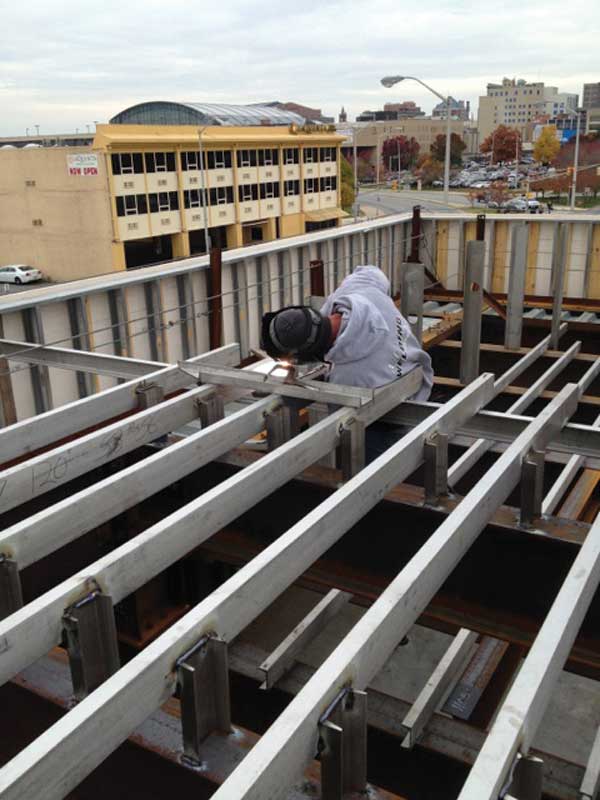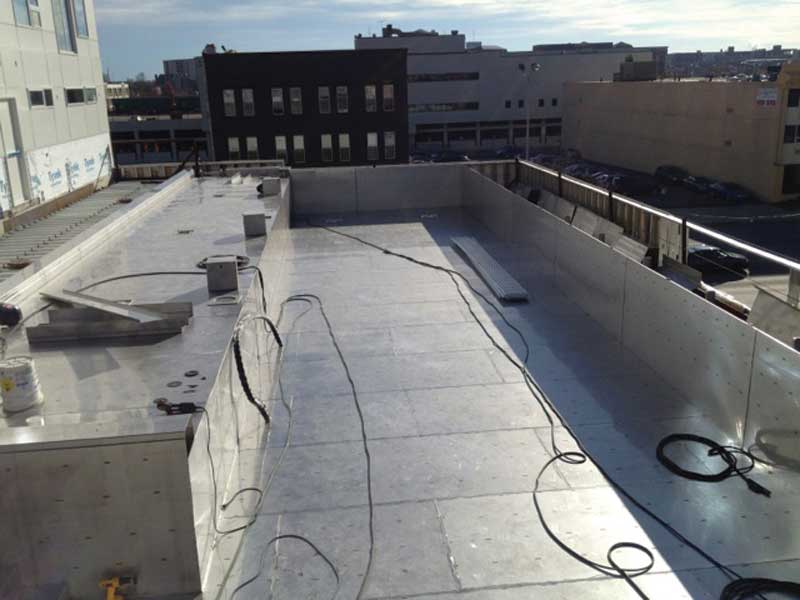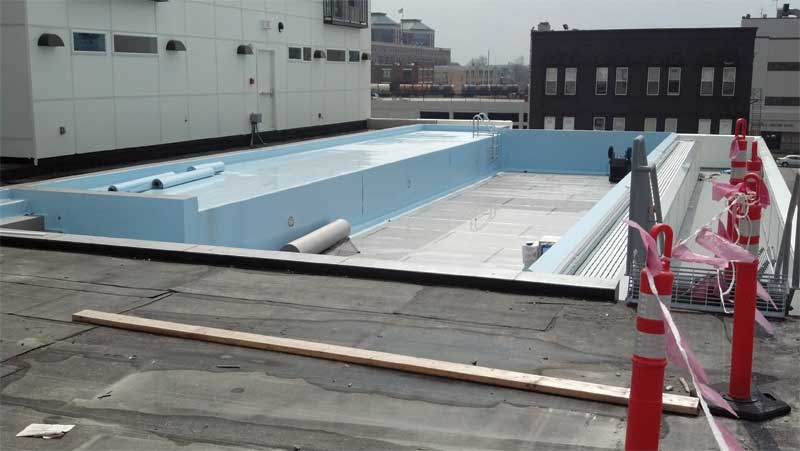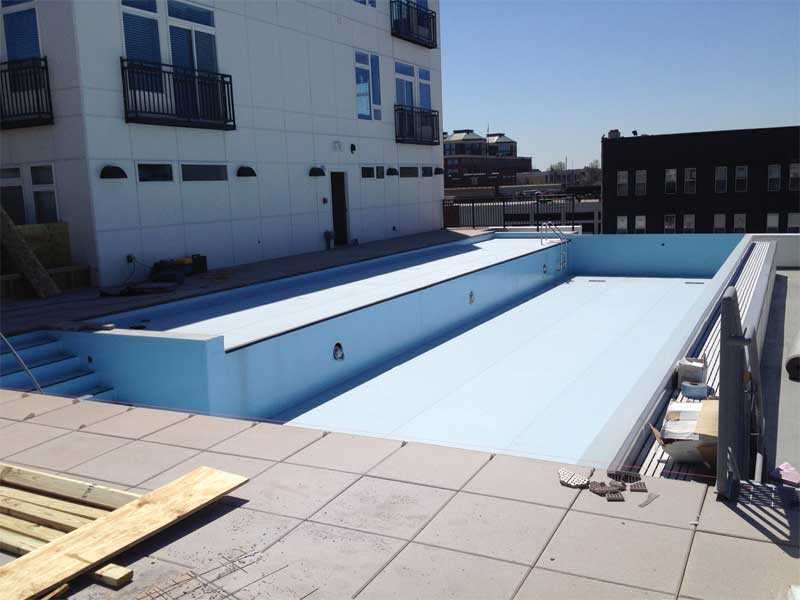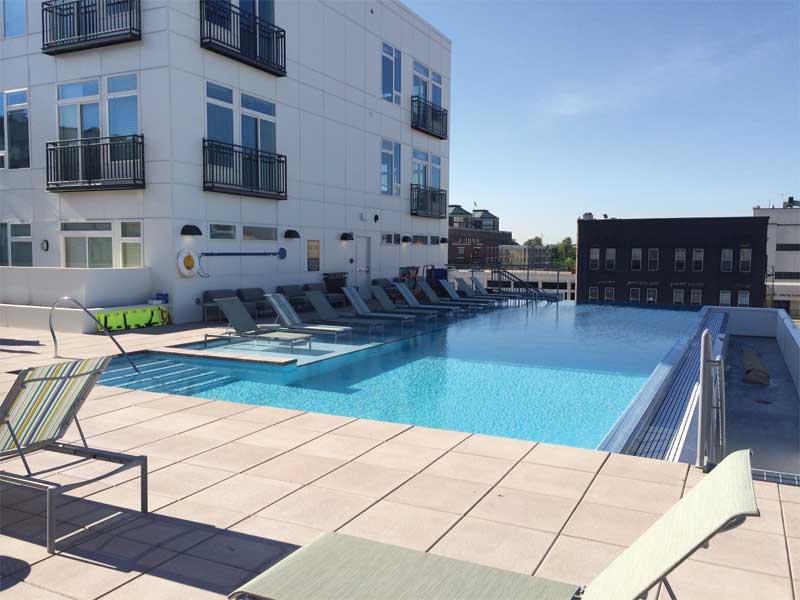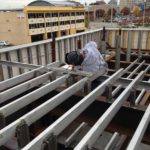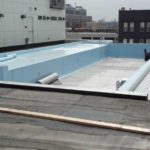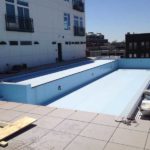The pool surface
A completely watertight and cost-effective polyvinyl chloride (PVC) membrane was applied to the surface of this particular installation. In some cases, high-end pool designers prefer not to cover the stainless steel with a cosmetic surface. Other designers like to line these pools with ceramic tiles or even marble.
The PVC membrane surface was selected because of its low-cost, flexibility, and striking blue colour. The PVC membrane also creates a soft surface for bathers, making it appealing for those who are mostly sitting and standing in the pool, as opposed to swimming. These 60-mil reinforced PVC membranes are watertight, slip-resistant, durable, and easy to maintain.
| Forging a work of art |
|---|
Growing demand
The use of stainless steel to build pools, particularly in elevated situations, has grown exponentially in the past decade. In fact, as architects and engineers become increasingly aware of the benefits of stainless steel as a pool building material, it is specified more often.
Today, these pools are in high demand for luxury condominiums featuring rooftop pools, as they are certain not to leak into the multi-million dollar penthouse units below. This type of PVC-lined stainless steel pool is not subject to cracking, peeling and/or leaking, which can be problems associated with other pool construction methods. Further, regular maintenance to ensure the integrity and beauty of the pool structure is minimal, which helps reduce operational costs. Another reason why architects and/or designers who are planning to include a pool—in any elevated situation—should look more closely at using stainless steel is that there are no limitations to the pool’s size or shape.
 Gary L. Novitski is the vice-president of the commercial division of stainless steel pools and spas for RenoSys Corporation in Indianapolis, Ind. He has more than 15 years of experience in the commercial aquatics industry. Novitski can be reached via e-mail at garyn@renosys.com.
Gary L. Novitski is the vice-president of the commercial division of stainless steel pools and spas for RenoSys Corporation in Indianapolis, Ind. He has more than 15 years of experience in the commercial aquatics industry. Novitski can be reached via e-mail at garyn@renosys.com.



